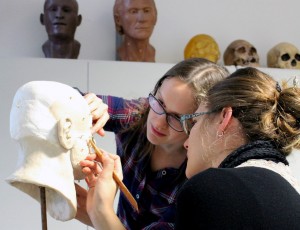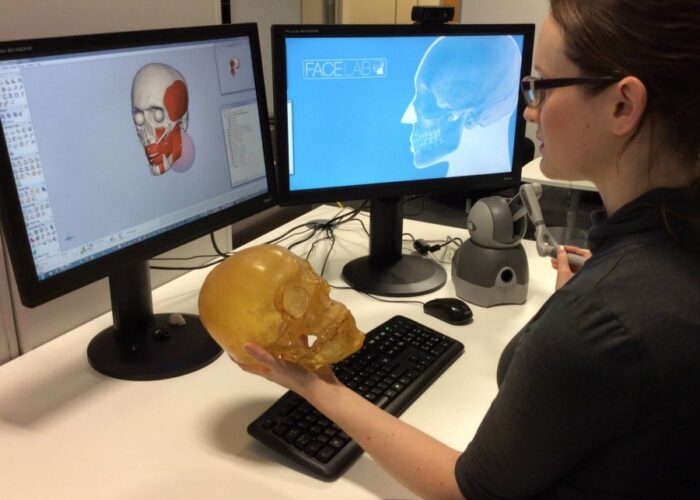
Facial reconstructions of wanted criminals and unidentified corpses are being made as part of a new crime-fighting initiative pioneered by a research group at the Liverpool John Moores University’s School of Art and Design.
Scientists at the ‘Face Lab’ work alongside the police, national and international museums as well as using archaeological research to create e-fits of criminals based on eye witness accounts and CCTV footage.
The state-of-the-art lab opened on Saturday and uses post-mortem decomposition, ancestry determination, preserved bodies and facial animation to create the models, and it is equipped with all the latest technology, including laser scanning and 3D printing.
Forensic artists also use modelling, texturing, animation and reconstruction software to create their moulds.
The lab hit headlines in January when the LJMU scientists used their software to recreate the face of St Nicholas, better known as Santa Claus, who died nearly 1,700 years ago.
Director of the Face Lab, Professor Caroline Wilkinson, explained that at the moment they use 3D reconstruction software, but aim to improve that in the future. She told JMU Journalism: “The research we are doing is with two different applications and we aim to use 4D instead of 3D to add animation and movement to the figures.
When questioned about the ethics and accuracy behind making the models, she explained: “The general public may question the accuracy of the work we are doing, but we have evidence to prove our accuracy.
“Concern has become less frequent because our research has increased. It’s always been a controversial field but we have access to living people and data.
“Society has always been against digging up human remains and the exhibition of the analysis, but this is always going to be controversial. Hopefully, with the work we are doing, we hope to alleviate these problems.”

